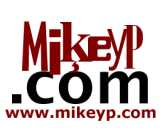Updating an Old iMac from Snow Leopard
I decided to give away a functional yet very old 2010 27” iMac. Prep seemed somewhat straightforward if I followed Howard Oakley’s instructions. After methodically deleting everything, I rebooted into Recovery Mode (hold down ⌘+R immediately after you hear the boot chimes), ran Disk Utility, and erased the drives. I assumed I could restore a clean OS from the Recovery Parition.
Oops.
Several years ago, I replaced the original hard drive with two SSDs, and in the process, lost the Recovery Partition. I tried booting into the Internet Recovery Mode (Opt+⌘+R), which started up ok, but crapped out after 20 minutes.
Luckily, tucked away on a dusty shelf in my closet, I found the original Snow Leopard install disk that came with the iMac! I popped it in the drive, rebooted while holding down ‘C’, and sure enough, the installer worked.
Just did a fresh install of OS/X Snow Leopard from disk on an old iMac. What a magical and wonderful experience it was. No wonder so many people (like me) fell in love with the Mac back then. @mikeyp@hachyderm.io
After booting up, I created a user named John Appleseed, with the password apple, so I could log in and download updates. (I also typed “apple” in the password hint box for whoever ends up with the Mac.)
However, Snow Leopard is an antique OS. Security certs for Wi-Fi are obsolete, and Wi-Fi won’t work if you try to connect to a modern router. You’ll need to connect to the internet via Ethernet.
Once connected, you can use System Updates to get the last Snow Leopard updates. I had to run this twice to get everything. However, you’ll be stuck again if you want to update further, or even use the modern internet, as the certs in Safari and the App Store are also obsolete. You can’t get any updates from Apple.
Here’s the workaround to get the OS up-to-date:
- Use Safari to download Chrome. You’ll get an old version of Chrome, but that’s fine. You’re only using it for one purpose.
- Launch Chrome, dismiss the annoying Google account popups, and head to this Apple Support page: How to download and install macOS.
- Download El Capitan 10.11, and follow the instructions on the support page to start the El Capitan installer. You might be tempted to download Sierra, but it won’t work - Sierra requires OS/X Lion.
- After the El Capitan install completes and restarts, skip the prompts to sign in with iCloud. Use Safari (or Chrome) and head back to that same Apple Support page. This time, in the “Use the App Store” section, choose the highest macOS that will work on your Mac. For my 2010 iMac, that’s High Sierra. This will open the App Store on a page that let’s you download and install that OS.
- After the new OS is installed, use the App Store or System Preference (depending on the OS version) to install all of the security updates. You might have to repeat and reboot a few times.
Congrats! You now have a very old, but not yet obsolete, functioning Mac, ready for someone new.

